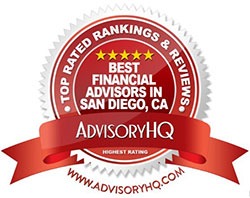Let’s face it: debt is part of the American way of life. According to the Federal Reserve, total consumer debt (mortgage, credit card, auto and other) totals $12.7 trillion, or roughly 99% of disposable personal income. Of this, revolving debt is just shy of $1 trillion, most of which is credit card debt. For households that carry a balance on their credit cards, the average balance is more than $16,700 and costs about $1,300 per year.
If you feel like you might be part of this statistic, first, take a deep breath and remember you’re not alone. Then, start digging your way out—and the sooner the better. Debt can stand between you and your financial goals, such as buying a home or retirement. It can also cause significant stress in your life and your relationships.
Here are some simple steps to help you start paying down those charges and reduce your debt.
Step 1: Stop using your credit cards.
Remember: when trying to get out of a hole, first stop digging! Plastic is very convenient, but most of us treat credit cards and cash very differently. If you want to force yourself to be careful about your spending, use cash instead of plastic. If you’re like most people, you’ll find that it’s much harder to pay cash for the same items you would willingly charge.
ACCREDITATIONS & AWARDS
We’re proud to have been honored by some of the organizations in our industry.

Step 2: Consolidate and pay aggressively.
The best approach to reduce credit card debt is to become systematic and aggressive. If possible, try to consolidate your balances into one card with the lowest interest rate. Then cut out some of your indulgences—lay off the morning coffee fix and brown bag your lunch. The $50-$200 a month you can save by making a few small sacrifices should go right into your credit card payment. If you can’t consolidate your debt, start with the card with the highest interest rate, and double or triple your monthly payments until you eliminate your balance. Then do the same thing with the next highest interest rate card, and so forth.
Step 3: Track a month’s worth of expenses.
This step will help you to see where you are using your credit and debit cards. Is it the daily coffee craving, a Big Mac habit or something else? Where are your indulgences, and what are they costing you? Are you using a credit card for things that are gone tomorrow, like coffee or groceries?
Step 4: Pay debt first, invest later.
Conventional wisdom states that if you can earn a higher after-tax return on your investments than the interest rate you’re paying on your debt, you should invest. Otherwise you should pay off your debt.
Think of it this way. Paying off your credit card is the only guaranteed return you can get on your investments. If your card charges you 14%, then you are earning 14% on your balance when you pay it off. Remember that high-risk investments like stocks might do better, but there’s a pretty good chance they could do a lot worse, too. Pay off the debt first.
Our Team
As a client of Blankinship & Foster, you have a dedicated team of financial advisors, service and support professionals.

Step 5: Ask for a lower rate.
You can accelerate the pay-down process by calling your card issuer and asking for a reduced interest rate. According to a survey conducted by the U.S. Public Interest Research Group, more than half (78%) of those who called and requested a lower interest rate were successful.
While this article focuses on credit cards, many of the same techniques can be used for all debts (student loans, auto and mortgage).
If your debt seems too big to manage, remember the adage: “How do you eat an elephant? One bite at a time.” It may take months or even years, but becoming debt free is your first step to true financial freedom. It is also a prudent move for those who are nearing retirement.
Managing and eliminating debt is an important part of a sound financial plan, but comprehensive financial planning doesn’t stop there. At Blankinship and Foster, we help you build an integrated financial plan that considers all the areas that affect your finances and your life. Contact us to learn more about how we can help you build your plan and take full control of your finances.

